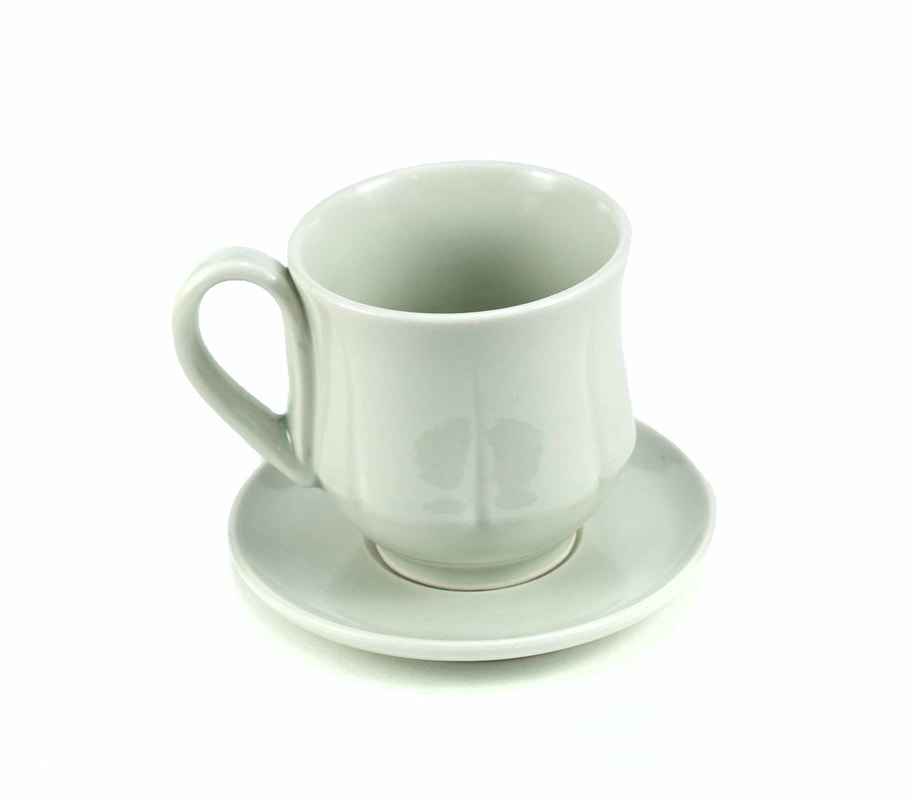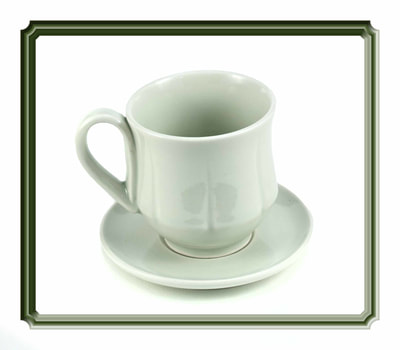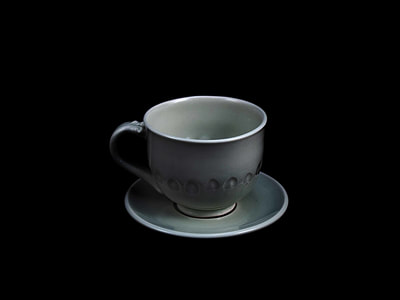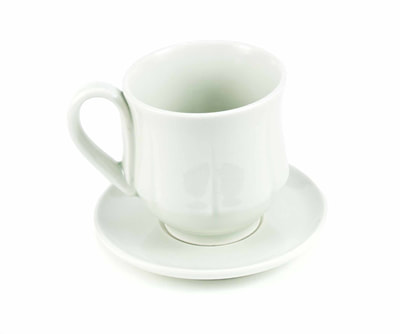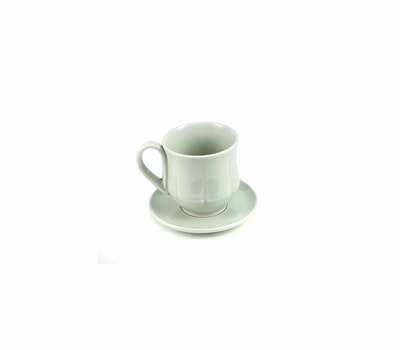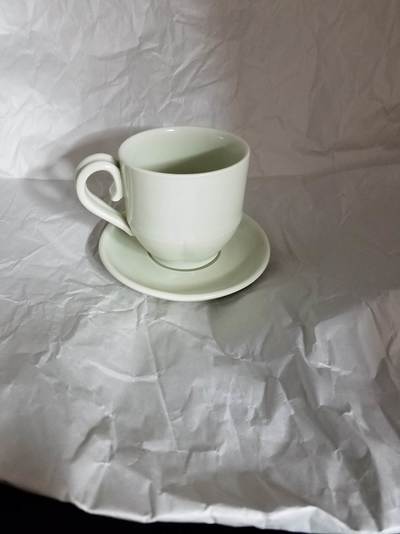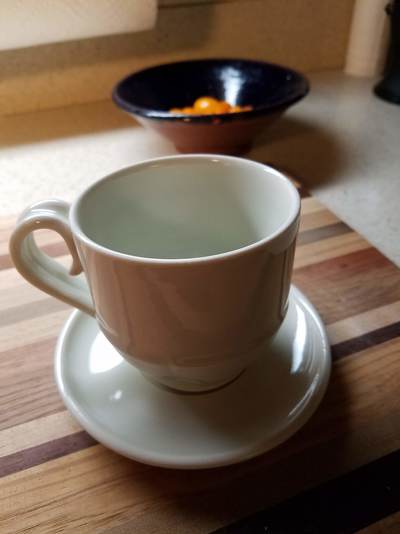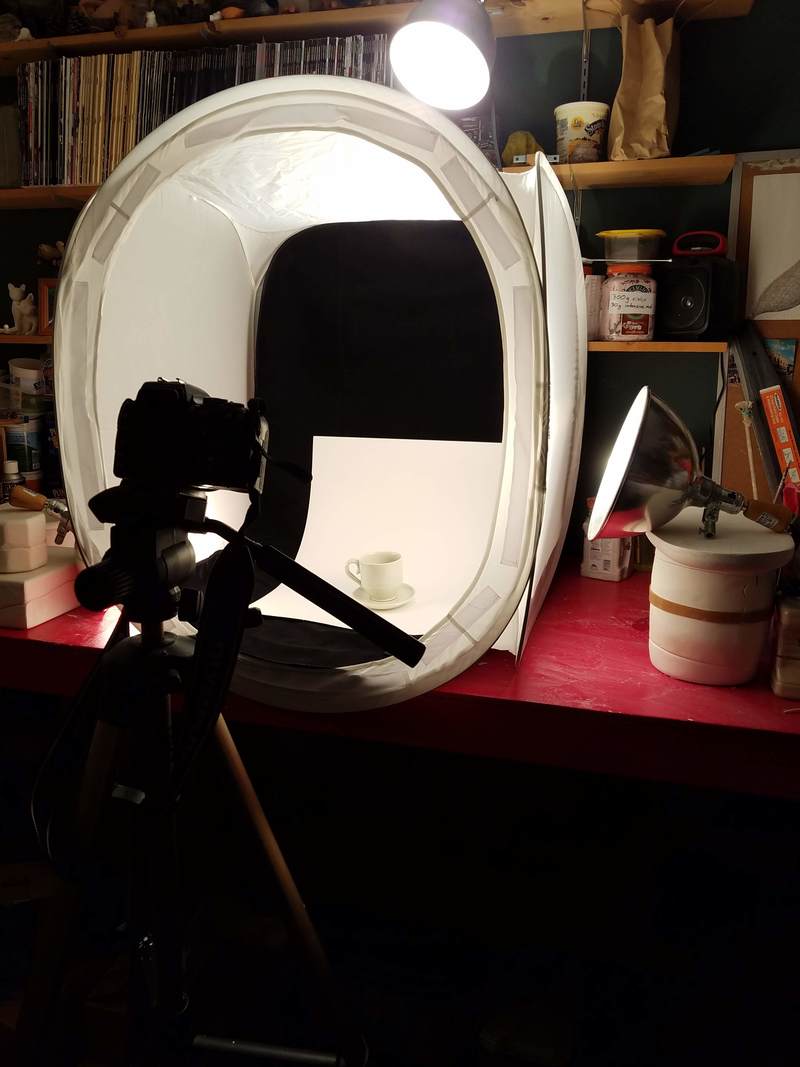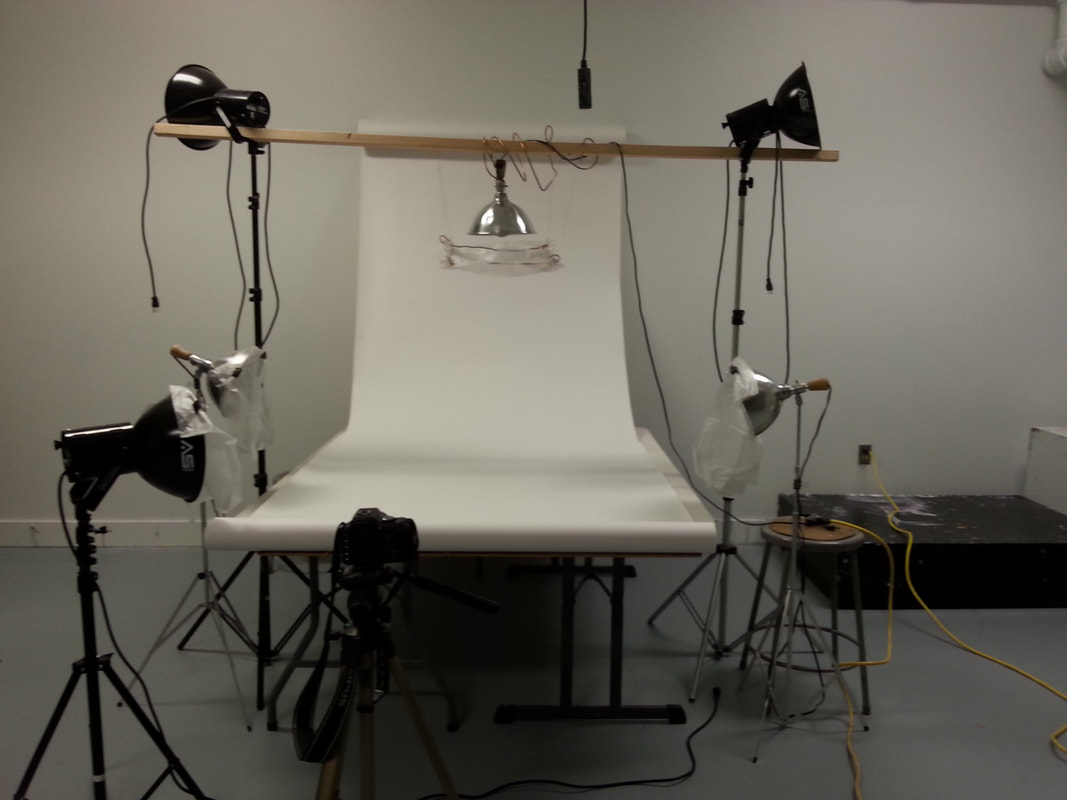|
This article is intended as a helpful guide for those entering Sip: A Ceramic Cup Show, but the information it contains would be relevant for photographing any 3-D work for entry into a show. You can make excellent work, but if your photography is bad no one will notice how good the work is because they will not be able to see it. This photo is an example of a good background and good enough lighting. You can see all of the details of the cup and there is nothing else in the image to distract you. Using a white background means your image is more likely to be used in publicity. (This is also true of getting published in ceramics magazines, it is easier to edit a photo on a white background into a larger layout.) Examples of Bad Photos Some of these are more obviously bad than others. 1. Distracting frame: This may seem like a good idea because is feels like it is emphasizing the cup. Unfortunately it has the opposite effect and draws your eye away from the cup. 2. Too Dark: This one is more obvious. There is nothing wrong with a black background, but you want to make sure that the cup is lit well enough that it is clearly visible. 3.Too Light: A white background is good, but you are in danger of over exposing your image if you are not careful. Make sure all of the details are still clear and the colors are true (not washed out). 4.Too much background: Often when you are photographing you need to include a fair amount of background to get a good shot. However, if you leave a lot of background your cup will get lost in all of the space around it. Crop down your image so that the cup is taking up most of the space. 5. Distracting vignette: Adding filters from your phone or photo editing program may be tempting, just like adding a frame might be. However, you want to make sure the photo represents your cup as it is and does not distract from the cup/ make it harder to see like this vignette does. 6. Distracting paper background: You may be in a hurry to get your photos taken and think that the cups will speak for themselves and therefor you do not need to worry about the background. This is not true, a distracting background will make your cups less likely to be noticed. Don't photograph on top of packing material, wrinkled sheets, etc. 7. Distracting environment: With the advent of Etsy and social media photographing work in an attractive environment has become popular. These photos are great, but not for entering a show. They are to tell a story about you more than the work. When you are entering a show having an environment around the cup will distract from the cup and make it less likely to get noticed. The cup in this photo is also back lit , which makes it harder to see the details on the front of the cup. How to get a good photo The Camera A good SLR camera is your best bet to get really good quality digital photographs; however, many of today's smart phones take very good quality pictures as well. If your phone allows you to change white balance, exposure etc, then it is a good enough phone to take the image. Just make sure it is set on it's highest picture quality so that you get good clarity in the image. Also make sure the white balance on whatever camera you are using is set for the lights you are using. If you use the wrong white balance your pictures will come too yellow or too blue depending on the light source. The Background The best backgrounds are either stiff unwrinkled paper, or vinyl. For years the standard for photographing ceramic work was a gradated gray paper background. This is still a good option, but no longer the preferred standard. Cloth is more difficult to work with because it is very hard to keep flat. If you like a black background black velvet will give you the best black. The nice thing about cups is that they are small, so you don't necessarily have to invest in a photo backdrop. I often use a piece of watercolor paper when photographing small work. Definitely do not use bed sheets, or any fabric with a visible texture. The Lighting The optimal lighting situation is 3 diffused lights, one from above and one from each side. Photo strobes are the absolute best lights, but most of us are not looking to invest in that much equipment. The second best option is photo flood lights (tungsten or LED). The lights need to be diffused when photographing your work so that you do not get shadows that are too strong and hide details on the work. There are many different ways of diffusing light. With professional equipment you can get a soft box to go over over the light. You can get a small soft box to put your work inside of. You can bounce the lights off of reflective umbrellas. If you do not want to invest in professional equipment you can make your own diffusers. You can bounce the lights off of a white or reflective surface like poster board or cardboard wrapped in foil. You can hang thin white fabric in front of your lights (just make sure it doesn't touch them if they are tungsten or the fabric will catch on fire). You can build your own soft box by making a frame and stretching white fabric over it. In a pinch you can even set up your backdrop outside on a cloudy day. A good cloud cover provides diffuse light. What ever set up you use you want to make sure that the front of the cup is lit well with no strong shadows on it, equally as bright all the way across, and that the shadows in the background are small and diffuse ( no hard edges). This is the set up used to take most of the images above. It uses 3 tungsten lights, a cheap collapsible soft box ordered from Amazon, a piece of water color paper as the background, and a digital SLR camera mounted on a tripod. The good photo was edited using Adobe Lightroom and Photoshop. I have managed to do passable editing just with the editing software that came with my Samsung phone. You will almost always get a better picture if you can at least crop it and adjust the brightness and contrast. This is far from a professional lighting studio set up, and if you are looking to get your work published you will want professional photographs, but for entering shows this set up works very well. This is a setup I have used to photograph larger pieces. It creates a gradated background with the lighting and the long length of the backdrop. There are 4 tungsten lights in use here with pieces of plastic shower curtain hung in front of them.
3 Comments
|
